ELECTRO-VOICE ND SERIES MICROPHONES
We take EV’s ND series to Chopped to see how they stand up to the abuse.
Review: Mark Woods
I’ve always thought of Electro-Voice as the ‘other’ American mic manufacturer. It’s probably been more successful in the broadcasting world but has its fans on live stages too. Released in the mid ’80s, the original N/DYM Series was a worthy contender to the leading brand with some sonic advantages. EV likes to boast these were the first mics to use the now near-universal neodymium magnets that help produce a flatter frequency response, with improved transients and signal-to-noise ratio. At the time they were released the vocal mics in the N/DYM range were seen to have a smoother sound that some singers preferred and I remember them as being especially good for taming strident female voices. The swivel-headed instrument mics were also popular. Funny looking things but they were easy to position with a tough sound quality that worked well on toms and guitar cabs.
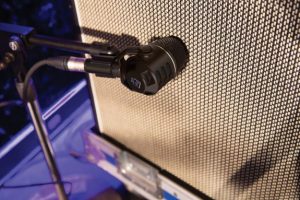
The new ND Series updates the N/DYM Series with a range of eight mics, all designed primarily for stage use. There are four vocal mics and four drum/instrument mics, seven dynamics and one condenser. The dynamics share a new capsule chassis and large Mylar diaphragm but each model’s coil and physical structure have been designed specifically to suit the characteristics of its intended application. The coils are a humbucking design to minimise any line noise. The mic bodies are made from die cast zinc and finished in matt-black polyurethane paint for a clean, discreet look under lights. They feel tough and the Memraflex grille is unyielding. Under the grille a hydrophobic foam insert protects the diaphragm from plosives and spit… even mud. Handling noise has been improved by a new four-point suspension system that sits on a tuned pneumatic pump at the base of the capsule.
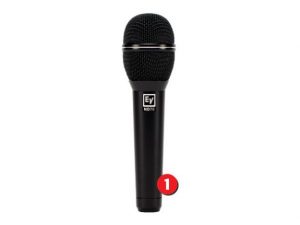
THE VOCAL MICS
The entry level (1) ND76 is a cardioid handheld mic designed for general-purpose vocal duties. It’s comfortable in the hand, well-balanced and feels substantial at 323 grams. Through speakers the first thing you notice is the level… it’s hot. The high sensitivity (quoted as 2.4mV/Pascal) means less preamp gain and lower noise but care is required if you’re hot-swapping with other mics as it might be closer to feedback than you think. That’s not to say it’s susceptible to feedback, it’s quite stable at high volumes, but it is around 6dB hotter than average. The pickup pattern is wide and even across the front of the rounded grille with strong rejection around the side and rear. The voicing above 1kHz is crisp rather than bitey with a wide peak centred around 6kHz and noticeable response above 10kHz. Below 1kHz the response depends on distance from the mic and, like most directional dynamic vocal mics, it’s pretty thin unless you’re right on the mic. Used up close the strong proximity effect fills out the sound nicely and you end up with a modern, scooped sound with added richness to the low-mids and a brightened high end. Pops are well controlled and it doesn’t freak out too much if you cover or swallow the mic. I suppose it could even be used for rap vocals or beatboxing.
The ND76S is the same mic with an off/on switch. For a few dollars more you get a recessed, sliding switch that is silent, smooth and well-weighted, so it’s easy to use but unlikely to be triggered accidentally by nervous fingers.
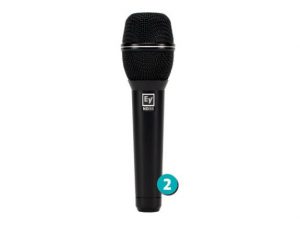
The next model up, the (2) ND86, is a super-cardioid vocal mic that’s in the same body as the ND76 but the top of the grille is flattened off, I suspect to provide a visual difference rather than functional. This is the model I’d choose for lead vocals in front of your average band. It’s much the same voicing as the ND76 but the tighter pick up pattern makes for a tighter sound, more isolation from the stage sound and more easy level in the monitors. Part of this quality is due to its natural off-axis response — particularly noticeable in a studio comparison — that’s better than your average vocal mic. It’s got the crisp top end but overall it’s a big, warm sound with strong body in the low-mids. The new capsule suspension system works too; handling noise is commendably low on all the vocal mics. The supplied stand mounts are fairly generic flexible sided clips but they’re simple and functional.
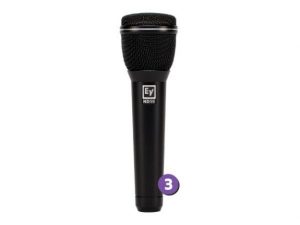
The top-of-the-range (3) ND96 is a supercardioid mic designed for the loudest stages and it’s a beast. Same body as the others in the range but the head is really flat this time and lets you get right on the diaphragm, a couple of millimetres away. The voicing is a little different to its siblings, with a slightly smoother top end and less low-mids as you move off the mic. The sensitivity is even higher than the rest (3.3mV/Pascal), and when combined with the tight hyper-cardioid pattern, it makes for a loud mic that’s super stable in the monitors. The trade-off is a narrow, shallow sweet spot and an un-even off-axis response, but that doesn’t matter because as long as the singer — or screamer — is right on the mic, the vocal will be clearly heard above the band and strongly present in the monitors. Really abusive and plosive-rich vocalists are met by the well-named double blast filters under the front grille. Unique to the ND96 is a small, sunken switch towards the bottom of the mic that further scoops the mids between 100Hz and 1kHz and I liked it on this setting. The sound gets concentrated into the high-mids and gives it the bite to cut through the stage sound, even when the band is on eleven, but does it without being screechy or too harsh.
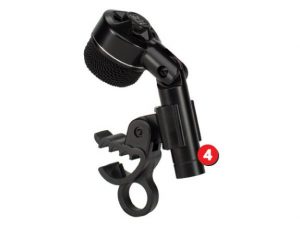
THE INSTRUMENT MICS
The instrument range begins with the cardioid (4) ND44. Primarily designed for toms it’s a pivoting-head design with a fast, punchy sound. It comes supplied with a drum-mount clip rather than a stand mount but I think a stand mount should also be included. The first time I wanted to use it was on a bass cab and it’s a thin body so I had to find a spare clip thin enough. Also I’ve written before about finding drummers who don’t like things hanging off their drums because it might change the balance or tone. Despite that, the drum-mount is a good design and slips onto the rim without any fiddling. Mounted on the drum or not its low profile is great for getting in tight spaces especially around the floor tom/ride cymbal area.
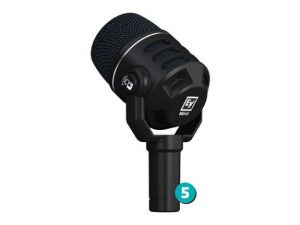
Its bigger brother is the super-cardioid (5) ND46. Again designed for cabs or toms it’s a little tighter, a little smoother and goes down deeper than the ND44 with a proper stand-mount and locking pivoting head.
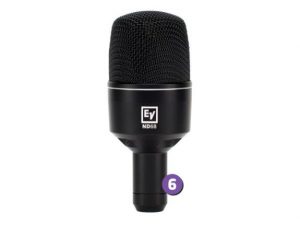
The (6) ND68 is the kick mic and it looks like one. It’s not too big to get right inside the drum if you want, and it’s got a sensible stand-mount. It’s got the classic rock ’n’ roll smile shape to its frequency response with a big, deep bottom end, a scooped mid-range between 330Hz and 2kHz, and an exaggerated attack around 5kHz. Quoted as going down to 20Hz, the low-end boost is centred around 60Hz. It’s a kick mic but there’s no reason it couldn’t be used on other low frequency sources that would benefit from its powerful rock voicing.
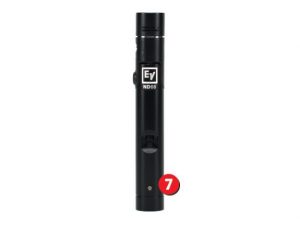
The (7) ND66 is the small diaphragm condenser of the range. In the ND Series this is the cymbals/hi-hat mic but could be used for acoustic instruments and percussion too. It features a lockable, pivoting head that increases your placement options if you’re close-miking the cymbals or hats. Included is a 75Hz or 150Hz HPF and a -10dB or -20dB pad. No big deal but curiously the HPF takes quite a deliberate effort to change whereas the Pad is quite easy to accidentally change. It should be the other way round. The frequency response has a few dB added between 5-10kHz to bring out the cymbals.
The first festival with the ND Series was the annual Guildford Banjo Jamboree. I got to know the vocal mics and condenser well, but no drums or amps allowed. Both the ND76 and ND86 were right at home in this environment, where harshness is not appreciated. They were airy and warm on the gentle voices, with the ND86 being the closer of the two. I briefly tried the ND96 but its pattern was too tight for these non-focussed performers and they tended to drop out if they weren’t up on the mic. The ND66 got plenty of use as an instrument mic with good results, especially on acoustic guitars. The off-axis response is very good, the frequency response is on the bright side of neutral and the sound is clear and detailed, bringing the instruments forward.



